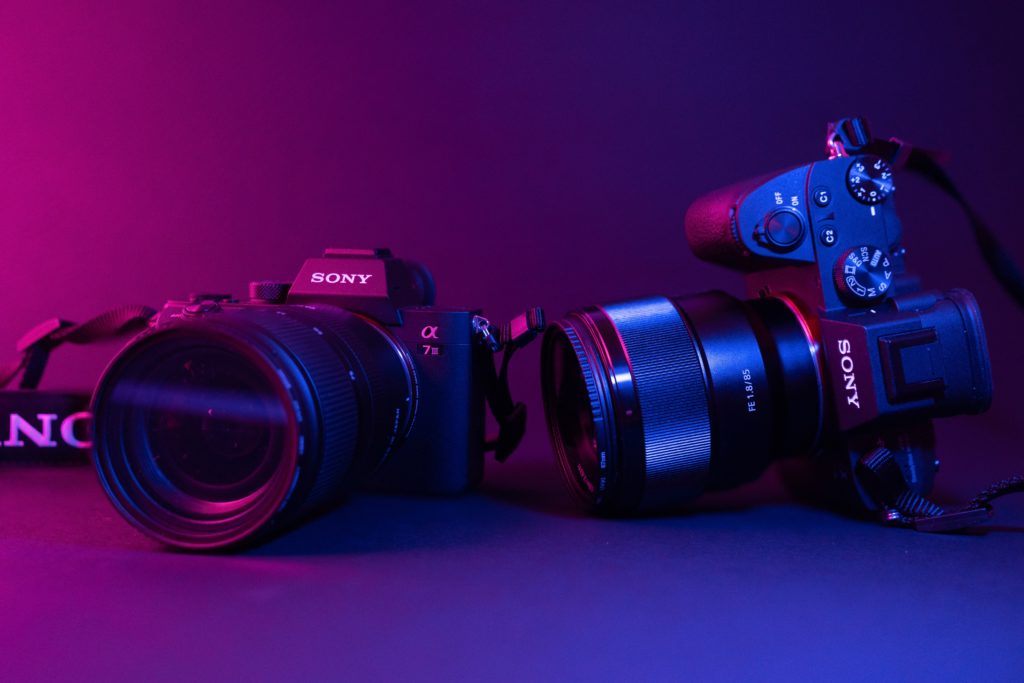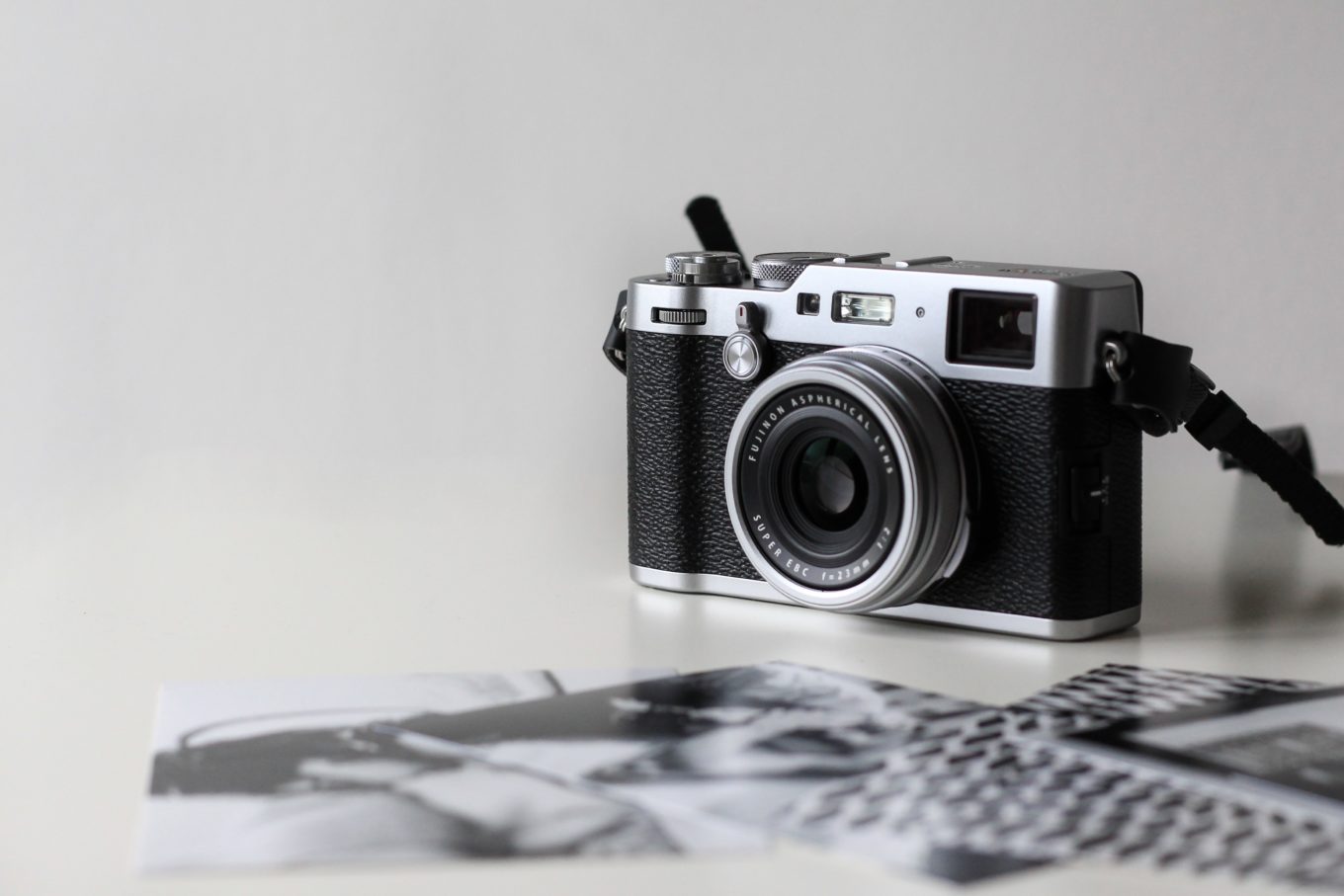Digital Single Lens Reflex (DSLR) cameras and mirrorless cameras are both popular choices for photographers, but they have some significant differences that can impact the way you take photos. In this blog post, we will explore the key differences between DSLR and mirrorless cameras, so you can decide which type is best for your needs.
What is a DSLR camera?
First, let’s define what a DSLR camera is. A DSLR camera is a type of digital camera that uses a mirror system to reflect light from the lens onto the image sensor. When you look through the viewfinder of a DSLR camera, you are looking through the lens itself, and the mirror reflects the image onto a prism, which then projects the image onto the viewfinder. When you press the shutter button, the mirror flips up and the image is captured by the image sensor.
What is a mirrorless camera?
On the other hand, a mirrorless camera does not have a mirror system. Instead, it uses an electronic viewfinder or an LCD screen to preview the image. When you take a photo with a mirrorless camera, the image is captured directly by the image sensor, without the need for a mirror.

What are the advantages of each type of camera?
One of the main advantages of DSLR cameras is their autofocus system. DSLR cameras use a phase-detection autofocus system that is faster and more accurate than the contrast-detection autofocus system used by most mirrorless cameras. This makes DSLR cameras particularly good for sports and action photography, where fast autofocus is essential.
Another advantage of DSLR cameras is their battery life. Because they do not have to power an electronic viewfinder or LCD screen, DSLR cameras can generally take more photos on a single battery charge than mirrorless cameras.
However, mirrorless cameras have several advantages over DSLR cameras as well. One of the main benefits is their size and weight. Because they do not have a mirror system, mirrorless cameras can be much smaller and lighter than DSLR cameras, making them a more convenient choice for travel and everyday use.
In addition, mirrorless cameras generally have a larger image sensor than DSLR cameras, which can result in higher image quality and better low-light performance. They also often have a faster continuous shooting speed, which is useful for capturing fast-moving subjects.
Another advantage of mirrorless cameras is their ability to shoot video. Many mirrorless cameras have advanced video capabilities, including the ability to shoot 4K video and to record high-quality audio. This makes them a good choice for photographers who also want to shoot video.
Finally, mirrorless cameras are generally more technologically advanced than DSLR cameras, with features such as built-in WiFi, Bluetooth, and GPS. This allows you to easily share your photos and videos online and to track the location where they were taken.
Ultimately, the decision between a DSLR and a mirrorless camera comes down to your individual needs and preferences. Consider your budget, the type of photography you do, and the features that are most important to you before making a decision. Both DSLR and mirrorless cameras have their own set of pros and cons, and the best choice for you will depend on your specific needs and goals as a photographer.
Pros & Cons of DSLR cameras?
Pros:
- Fast autofocus: DSLR cameras use a phase-detection autofocus system that is generally faster and more accurate than the contrast-detection autofocus system used by most mirrorless cameras. This makes them particularly good for sports and action photography, where fast autofocus is essential.
- Long battery life: Because they do not have to power an electronic viewfinder or LCD screen, DSLR cameras can generally take more photos on a single battery charge than mirrorless cameras.
- Wide range of lenses available: DSLR cameras typically have a larger selection of lenses available, including specialized lenses for different types of photography. This allows you to choose the lens that best suits your needs.
- Good value: DSLR cameras are generally more affordable than mirrorless cameras, especially at the entry-level price point.
Cons:
- Bulky and heavy: DSLR cameras are generally larger and heavier than mirrorless cameras, which can make them less convenient to carry around.
- Slower continuous shooting: Mirrorless cameras generally have a faster continuous shooting speed than DSLR cameras, which can be useful for capturing fast-moving subjects.
- Poor video performance: Many DSLR cameras do not have advanced video capabilities and may produce a lower-quality video than mirrorless cameras.
- No built-in WiFi or Bluetooth: Some DSLR cameras do not have built-in WiFi or Bluetooth, making it more difficult to share your photos and videos online.
Overall, DSLR cameras are a good choice for photographers who need a fast autofocus system and long battery life, and who are looking for a more affordable option. However, they may not be the best choice for photographers who want a smaller, lighter camera with advanced video capabilities and technological features.
Pros & Cons of mirrorless cameras?
Pros:
- Smaller and lighter than DSLR cameras, making them more portable and easier to carry around
- Generally have a larger image sensor, which can result in higher image quality and better low-light performance
- Faster continuous shooting speed, useful for capturing fast-moving subjects
- Advanced video capabilities, including the ability to shoot 4K video and record high-quality audio
- Technologically advanced, with features such as built-in WiFi, Bluetooth, and GPS
Cons:
- Autofocus system may not be as fast or accurate as the phase-detection system used by DSLR cameras
- May have shorter battery life than DSLR cameras due to the power required to run the electronic viewfinder or LCD screen
- May be more expensive than DSLR cameras, especially high-end models
- Some photographers may prefer the feel and handling of a DSLR camera
It’s worth noting that these pros and cons are generalizations and may not apply to all mirrorless cameras. As with any type of camera, it’s important to carefully consider your specific needs and preferences before making a decision.
What are some popular models?
There are many popular DSLR cameras on the market, including:
- Canon EOS 5D Mark IV: This is a full-frame DSLR camera that is popular among professional photographers. It has a 30.4 megapixel image sensor and can shoot 4K video.
- Nikon D850: This is another full-frame DSLR camera that is popular among professional photographers. It has a 45.7 megapixel image sensor and can shoot 4K video.
- Canon EOS Rebel T6i: This is an entry-level DSLR camera that is popular among amateur photographers. It has a 24.1 megapixel image sensor and can shoot 1080p HD video.
- Nikon D3500: This is another entry-level DSLR camera that is popular among amateur photographers. It has a 24.2 megapixel image sensor and can shoot 1080p HD video.
- Canon EOS 7D Mark II: This is a mid-range DSLR camera that is popular among enthusiasts. It has a 20.2 megapixel image sensor and can shoot 1080p HD video.
There are many popular mirrorless cameras on the market, including:
- Sony Alpha a7 III: This full-frame mirrorless camera is popular among professional photographers and videographers for its advanced features and excellent image quality. It has a 24.2 megapixel image sensor, 4K video capabilities, and a fast continuous shooting speed.
- Fujifilm X-T4: This mirrorless camera is popular among photographers who appreciate its retro design and advanced features. It has a 26.1 megapixel image sensor, 4K video capabilities, and a fast continuous shooting speed. It also has in-body image stabilization, which helps to reduce camera shake when shooting photos and videos.
- Canon EOS R: This full-frame mirrorless camera is popular among Canon users who want to upgrade from a DSLR. It has a 30.3 megapixel image sensor, 4K video capabilities, and a fast continuous shooting speed. It also has a vari-angle touchscreen LCD, which allows you to easily take photos from different angles.
- Panasonic Lumix S5: This full-frame mirrorless camera is popular among photographers who need a compact and lightweight camera with advanced features. It has a 24.2 megapixel image sensor, 4K video capabilities, and in-body image stabilization. It also has a high-resolution electronic viewfinder, which allows you to preview your shots with great detail.
- Nikon Z6: This full-frame mirrorless camera is popular among Nikon users who want to upgrade from a DSLR. It has a 24.5 megapixel image sensor, 4K video capabilities, and a fast continuous shooting speed. It also has in-body image stabilization, which helps to reduce camera shake when shooting photos and videos.
These are just a few examples of popular cameras, and there are many other models to choose from as well. It’s important to carefully consider your needs and preferences before choosing a camera, as different models may be better suited to different types of photography.
Which type is best for you?
So, which type of camera is best for you? It ultimately depends on your needs and preferences. If you need a fast autofocus system and long battery life, a DSLR camera may be the better choice. On the other hand, if you want a smaller and lighter camera with advanced video capabilities and technological features, a mirrorless camera might be a better fit.

